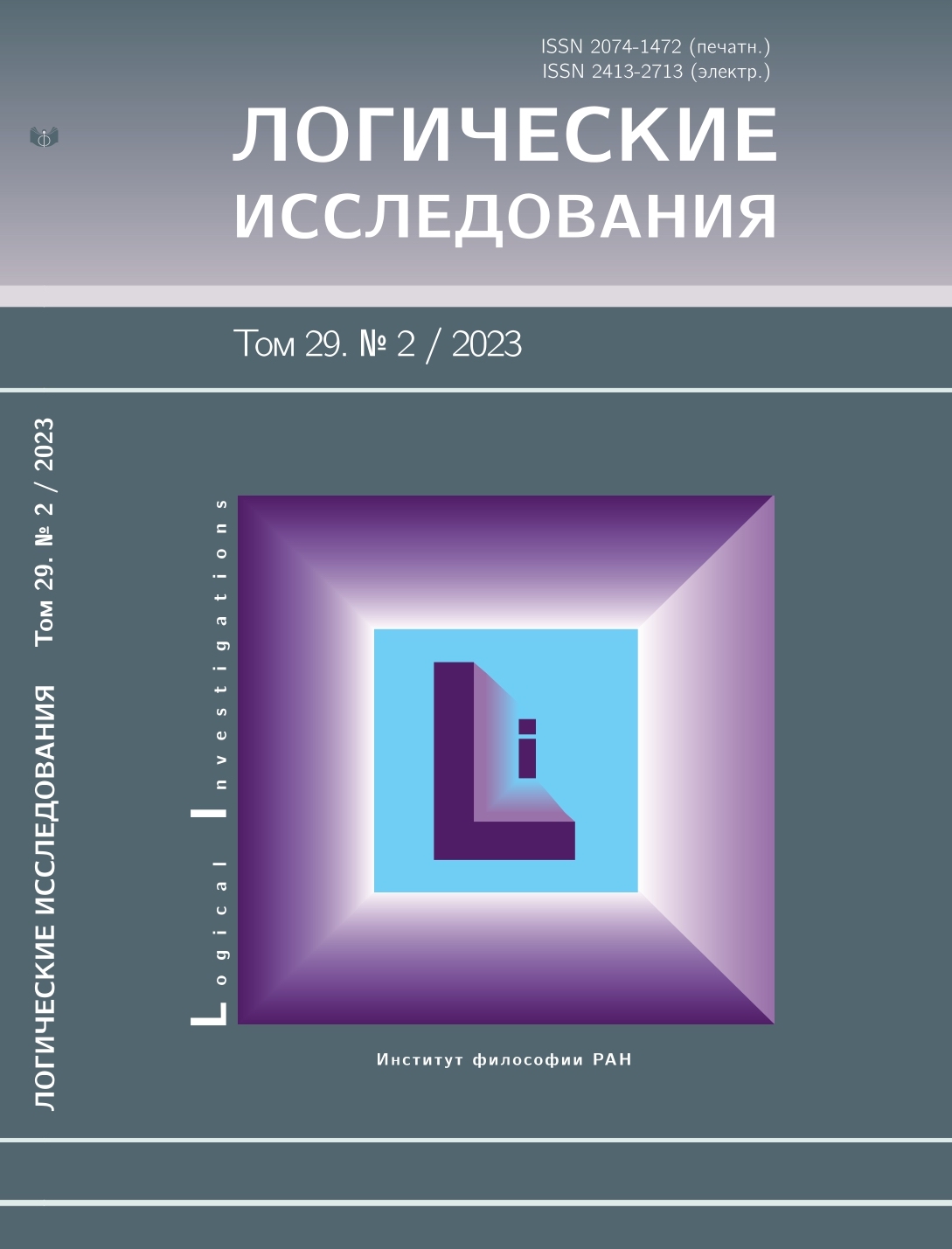A natural generalization of the Turing computability model
##plugins.themes.bootstrap3.article.main##
Abstract
The Turing computability model is a model of algorithmic symbolic transformations that can be performed by humans. The Church-Turing thesis is a statement about the completeness of their formalisms with respect to this model. Algorithmic transformations are applicable not only to symbols, but also to physical objects. Some of these transformations can be analyzed by means of Turing formalism by way of special character encoding. At the same time, there are physical algorithms that go far beyond the standard Turing model. Examples are recipes, medical procedures, technological processes, etc. Their common feature is not only the operation of physical objects, but also the appeal to external physical processes. The general definition of an algorithm, as prescriptions for a sequence of actions to obtain the desired result, is satisfied by well-known phenomena of goal-directed behavior. Symbolic calculations are a special case of goal-directed behavior.
Models of combined temporal and dynamic logic can be used to analyze goal-directed behavior. Such an analysis allows us to conclude that there are at least three types of elementary rules underlying complex purposeful behavior: 1) passively-processual – "If there is a process $P$, then do nothing, but wait for it to lead you to the desired goal $G$"; 2) constructive – "If there is a $C$, perform action $d$, the immediate result of which is the desired goal $G$"; 3) constructively-processual – "If $C$ takes place, perform action $d$ so that its immediate result $R$ initiates process $P$, which will lead to the desired goal $G$". The combined logic allows you to determine the conditions for the correctness of these rules. Constructively-processual rules have the property of universality, since two other types of rules are reduced to them.
In the paper we define a T-machine (teleological machine) that implements complex goal-directed behavior, and conduct a comparative analysis with Turing machines. It is shown that within the framework of the new algorithmic model there are functions that are computable in it, but not computable in Turing model. In the new model, algorithms have the status of laws of living nature related to the emergence of life and evolution. The algorithmic model of goal-directed behavior can be naturally applied to describe and analyze many phenomena of the social sphere.
##plugins.generic.usageStats.downloads##
##plugins.themes.bootstrap3.article.details##
Copyright (c) 2023 Владимир Иванович Шалак

This work is licensed under a Creative Commons Attribution-NonCommercial 4.0 International License.
References
Дарвин 1941 – Дарвин Ч. Способность к движению у растений // Сочинения в девяти томах. Том 8, Изд-во АН СССР, М., 1941.
Назарова 1995 – Назарова О.А. Специфика объяснения в общественных науках. Диссертация на соискание ученой степени кандидата философских наук. Москва, 1995.
Сачков – Сачков Ю.В. Закономерности // Новая философская энциклопедия. URL: https://iphlib.ru/library/collection/newphilenc/document/HASH016ac76ec16e297502ddf56a
Сидоренко – Сидоренко Е.А. Закон // Новая философская энциклпедия. URL: https://iphlib.ru/library/collection/newphilenc/document/HASH28261e19260562f9d37028
Смирнов 1963 – Смирнов В.А. Алгоритмы и логические схемы алгоритмов // Проблемы логики. М., 1963. С. 84–101.
Шалак 2021 – Шалак В.И. Алгоритмическая модель социальных процессов // Философские проблемы информационных технологий и киберпространства. 2021. № 1. URL: https://cyberspace.pgu.ru/jour/article/view/220.
Шалак 2022 – Шалак В.И. Телеология и целенаправленное поведение: логический анализ // Логические исследования. 2022. 28(2). С. 9-39. URL: https://logicalinvestigations.ru/article/view/627/604
Church 1936 – Church A. An Unsolvable Problem of Elementary Number Theory (англ.) // American Journal of Mathematics, Vol. 58, No. 2. (Apr., 1936), pp. 345–363
Copeland 2022 – Copeland B. J. "The Church-Turing Thesis", The Stanford Encyclopedia of Philosophy (Summer 2020 Edition), Edward N. Zalta (ed.), URL: https://plato.stanford.edu/archives/sum2020/entries/church-turing/.
Goranko, Rumberg 2022 – Goranko V., Rumberg A. "Notes to Temporal Logic", The Stanford Encyclopedia of Philosophy (Summer 2022 Edition), Edward N. Zalta (ed.), URL: https://plato.stanford.edu/entries/logic-temporal/notes.html#note-4.
Ostroy 2002 – Ostroy A. (2002) God Is the Machine // URL: http://www.wired.com/2002/12/holytech/
Schmidhuber 1997 – Schmidhuber J. (1997) A Computer Scientist’s View of Life, the Universe, and Everything // Foundations of Computer Science. Lecture Notes in Computer Science, Vol. 1337, pp. 201–208.
Turing 1936 – Turing A.M. On Computable Numbers, with an Application to the Entscheidungsproblem // Proceedings of the London Mathematical Society. 1936–1937. Vol. 42. pp. 230–265.
Turing 1948 – Turing A.M. Intelligent Machinery // National Physical Laboratory Report, 1948.
Zuse 1970 – Zuse K. Calculating Space. Cambridge, Mass: MIT Technical Translation AZT-70-164-GEMIT, Massachusetts Institute of Technology (Project MAC), 1970.
